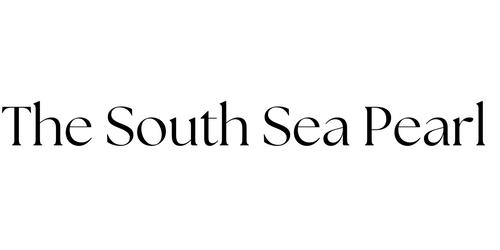Блог о жемчужине Южного моря / indonesia
-
январь 04, 2022Жемчуг Южных морей естественного цвета и блеска
-
ноябрь 24, 2020
The 60th Anniversary of The South Sea Pearl
by Dr. L. E. Cartier, first published in Facette 23 (February 2017)
The South Sea pearl oyster Pinctada maxima is known to produce white, cream and golden pearls. Such pearls are cultured mainly in Australia, Burma (Myanmar), Indonesia and the Philippines. Interestingly, 2016 marked the 60th anniversary of the first harvest of South Sea cultured pearls at the Kuri Bay farm (Australia), established by Tokuichi Kuribayashi of Nippo Pearls in 1954 (Müller, 1997). In the past few decades, South Sea cultured pearls have become some of the most desired and expensive cultured pearls in the market.
At present, golden South Sea cultured pearls are harvested mainly in Burma, the Philippines and Indonesia. Pearl farmers have targeted traits and oysters that can enable them to focus on specific nacre colours and thus pearl colours. In February 2016 Dr. Laurent Cartier had the opportunity of visiting Jewelmer pearl farms near Palawan Island in the Philippines and observing the different culturing techniques required to harvest golden South Sea pearls. The Jewelmer company was co-founded in 1979 by Jacques Branellec and Manuel Cojuangco with the aim of producing high-end golden South Sea cultured pearls.
Untreated high-quality golden South Sea cultured pearls from the Pinctada maxima oyster continue to be rare and highly sought after on the international market. This complexity (both ecologically and technically) associated with cultivating these pearls is a limiting factor in offering the market larger quantities of such high-quality cultured pearls. Treatments to attain and imitate such pearl colours and qualities will continue to exist, and SSEF is carrying out research on such treatments. As such, it is also very important to visit production sites and collect reliable samples for research. So it is important that both gemmological research and correct disclosure (see CIBJO Pearl Book) are followed. Another aspect of pearls that SSEF has been very active in is DNA fingerprinting of pearls, such as those from Pinctada maxima. In order to continue to brand and market South Sea cultured pearls from Pinctada maxima as such it is important to be able to distinguish these at a gemmological level, between them and pearls of similar colour from other species. The appreciation of golden South Sea cultured pearls will continue to rise as this relatively new resource in the jewellery industry gains wider attention and embodies a golden future.
For more info also see the article by Cartier & Krzemnicki (2016).
-
ноябрь 01, 2020
Colour in cultured pearls has many causes
Colour in cultured pearls has many causes, namely organic pigments and the water reservoir where the pearl shell is grown (sea water or freshwater) that has different manganese (Mn) concentrations with impact on nacre's colours. The mollusc species is, of course, one of the most important factors in this process, specially the donor specimen that provides the mantle tissue that is inserted in the gonads or mantle (depending on the culturing method) of a productive pearl mollusc for the formation of the cultured pearl sac. In Fiji, the local pearl oyster Pinctada margaritifera typica has mantle tissue cells that secrete unusual earthy coloured nacre (seen in the oysters' mother-of-pearl shell interior), and thus the colours of those cultured pearls are also expected to be coloured in such a way. Fiji has been producing natural color beaded cultured pearls, with ocasional non-bead "keshis", in relatively limited numbers since 1999 when Justin Hunter, a biologist and visionary, started his blue economy project with a pearl farm in his home land in Savusavu, Fiji, promoting sustainable luxury through marine cultured pearls. Photos © J. Hunter Pearls Fiji
#pearls #pearljewelry #luxury #gemology #jewelry -
декабрь 28, 2019
What do you know about Keshi Pearls?
Keshi (ケシ), meaning poppy seed in Japanese, was originally used in Japan for very small-sized natural pearls, namely the very rare Akoya natural pearls that were locally collected until the early 20th century. Today, however, the original meaning of the word "keshi" became corrupted and is now a trade name for the nacreous non-bead saltwater cultured pearls that form, by accident or intentionally, inside pearl producing molluscs as a by-product of the classic seeding or grafting process. The first reported cultured keshi pearls in the early-20th century were associated to the then emerging Akoya cultured pearl farming in Japan and now "keshis" are are also found elsewhere and in other nacreous pearl producing molluscs (e.g. South Sea, Tahitian). Distinguishing non-bead cultured from natural pearls is very complex, requiring lab experience and modern tools - real-time X-ray microradiography (RTX) and X-ray computerised tomography (µ-CT), and often results in different interpretations. In the image, the Rockpool Styarfish Cuf by Paspaley featuring South Sea keshi cultured pearls gathered over four annual harvests, showing the exceptional character of these rare nacreous biogenic gems that are discovered in very small quantities each year .
Source: Rui Galopin de Carvalho. (Portugal Gems Academy)




